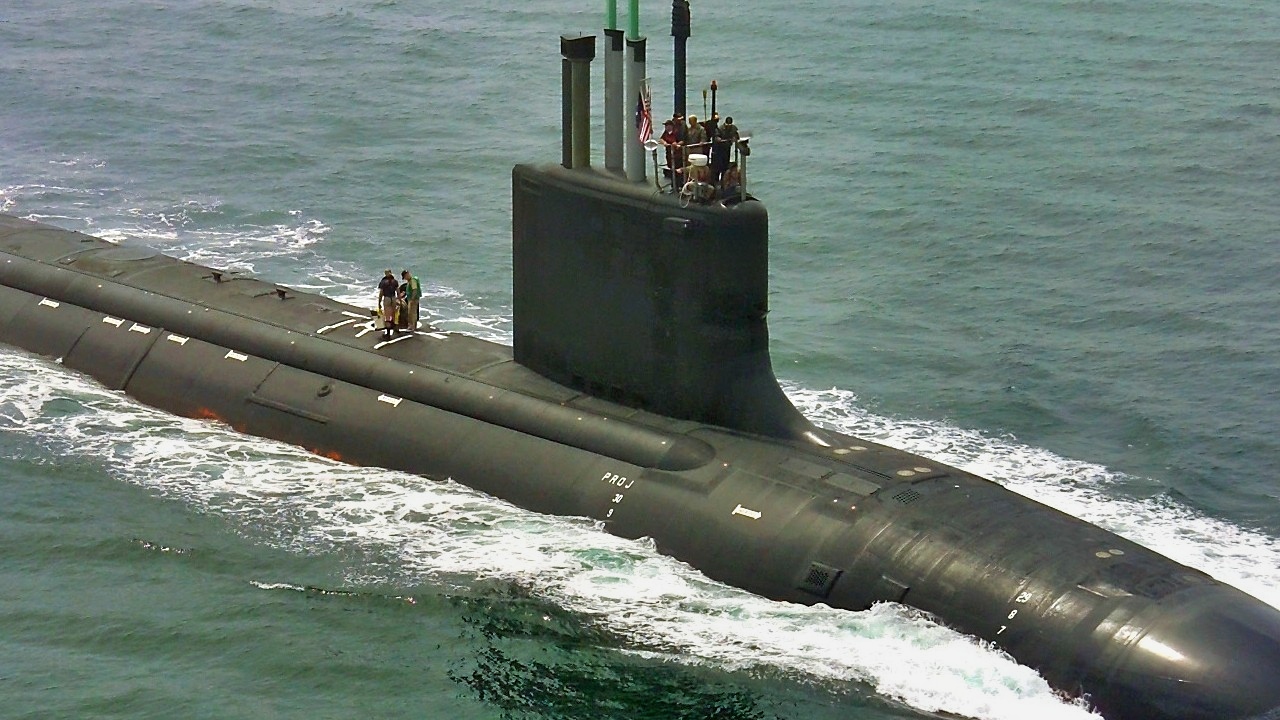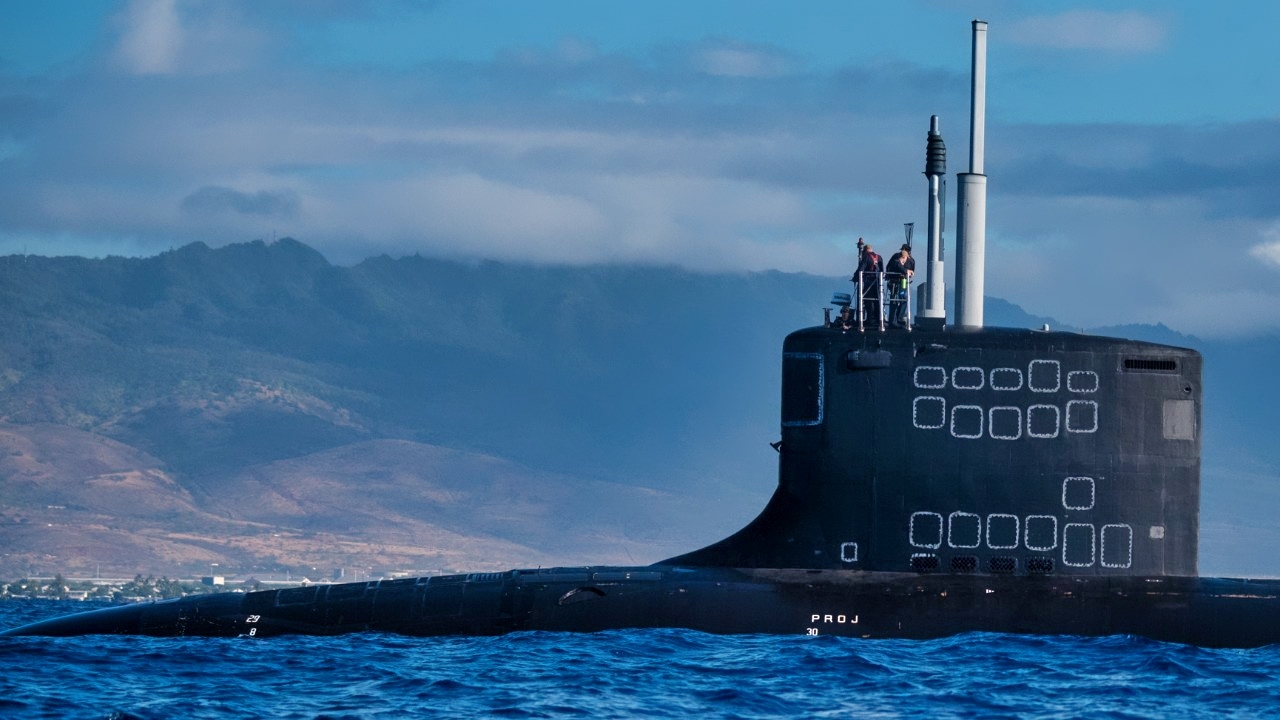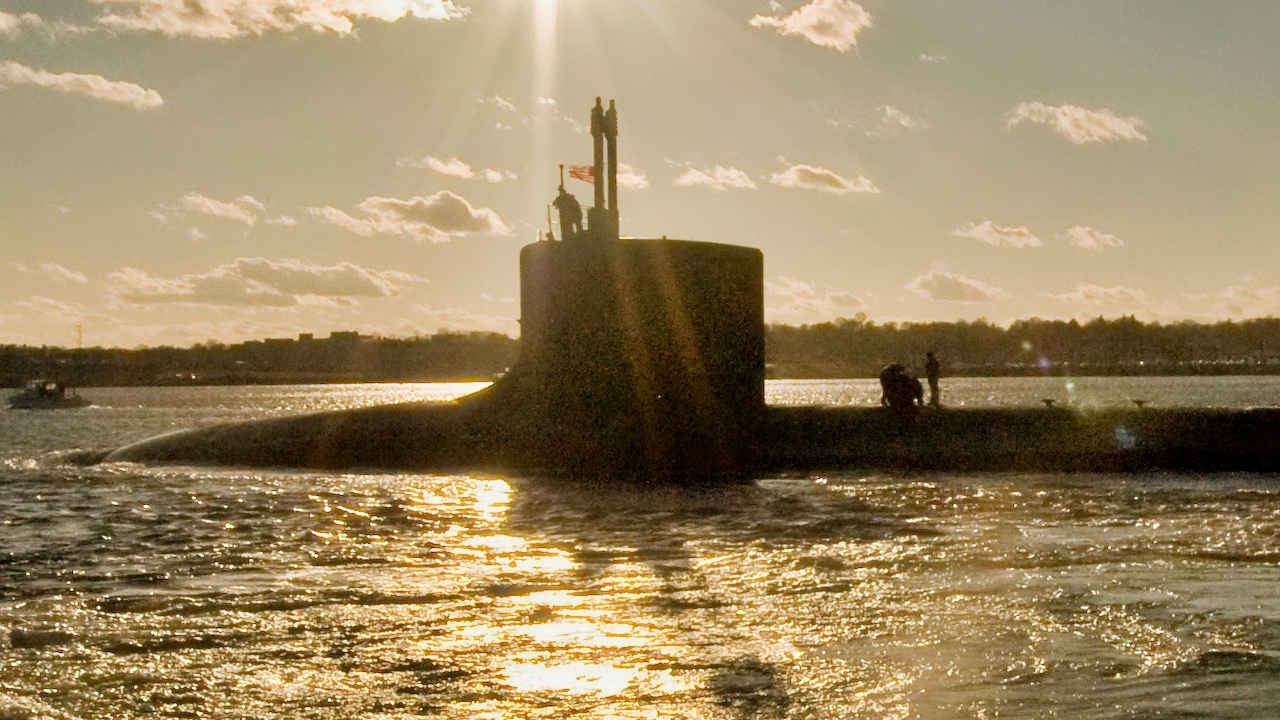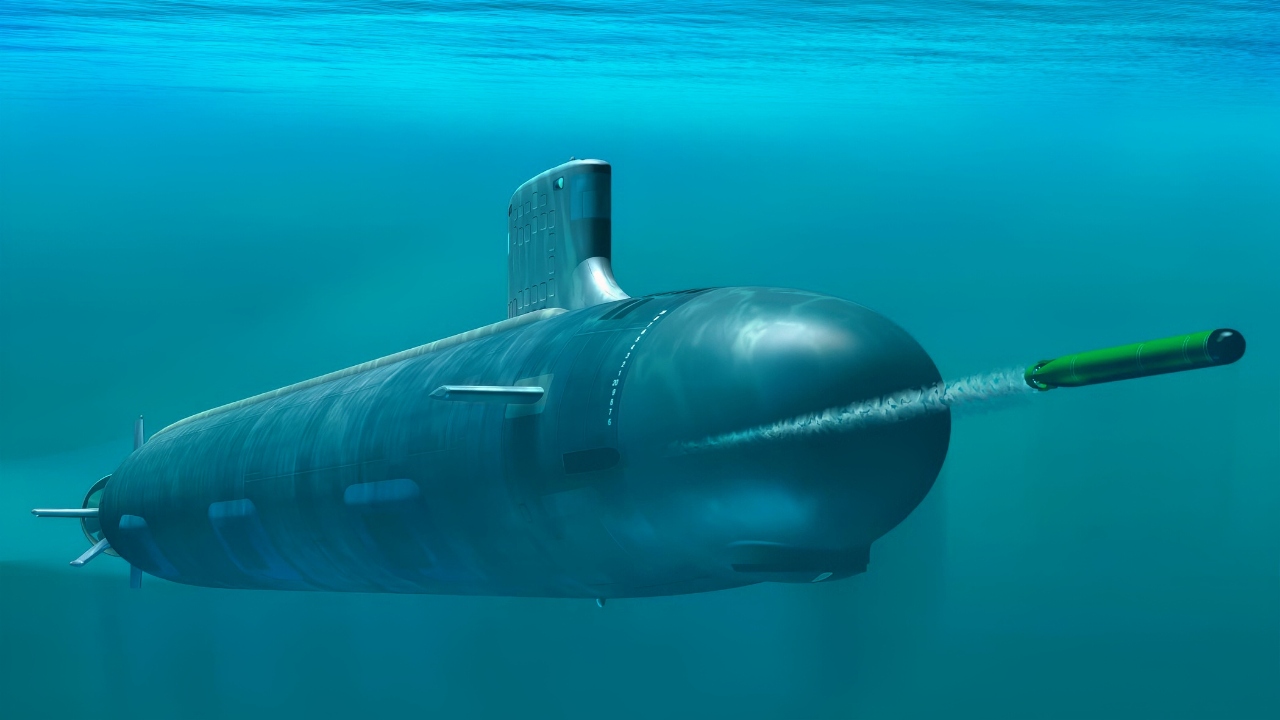Virginia-Class: The Quiet Backbone of U.S. Sea Power
Key Points and Summary
-The Virginia-class was conceived to replace aging Los Angeles-class subs with a quieter, more versatile boat the Navy could afford after the truncated Seawolf program.
-Early blocks carried 12 Tomahawks and emphasized modular construction and photonics masts; later blocks added Large Aperture Bow sonar and Virginia Payload Tubes.
-Block V introduces the Virginia Payload Module, an 84-foot section with four large-diameter tubes carrying 28 additional Tomahawks, restoring strike capacity as Ohio SSGNs retire.
-Operationally, Virginias handle ASW, ASuW, ISR, special operations, and land attack; first combat Tomahawks were fired in 2018.
-The future hinges on production cadence, VPM payloads, and allied AUKUS integration.
Virginia-Class: The Submarine Built to Fight Forever Wars Quietly
In the 1990s, the U.S. submarine force stood at an odd crossroads.
The Cold War ended just as America launched the most capable attack sub it had ever built—Seawolf—and then immediately discovered it couldn’t afford a 29-boat fleet of $3-billion thoroughbreds.
At the other end of the pier were the Los Angeles-class workhorses, a 62-boat armada that had done everything from blue-water ASW to land-attack. Those 688s would age out starting in the 2000s, and the Navy would need a replacement that could do as much, cost less, and arrive fast enough to avoid a capability valley.

040730-N-1234E-001
Groton, Conn. (July 30, 2004) – The nation’s newest and most advanced nuclear-powered attack submarine and the lead ship of its class, PCU Virginia (SSN 774) returns to the General Dynamics Electric Boat shipyard following the successful completion of its first voyage in open seas called “alpha” sea trials. Virginia is the Navy’s only major combatant ready to join the fleet that was designed with the post-Cold War security environment in mind and embodies the war fighting and operational capabilities required to dominate the littorals while maintaining undersea dominance in the open ocean. Virginia and the rest of the ships of its class are designed specifically to incorporate emergent technologies that will provide new capabilities to meet new threats. Virginia will be delivered to the U.S. Navy this fall. U.S. Navy photo by General Dynamics Electric Boat (RELEASED)
So the requirement that produced Virginia was brutally pragmatic: Seawolf performance where it mattered, Los Angeles versatility everywhere else, at a price and tempo Congress would tolerate.
The Navy also wanted a boat built for an undersea world shifting from open-ocean duels to crowded littorals: more ISR and special operations, smarter payload options, better connectivity with the joint force, and growth margin for whatever came next.
Design Philosophy: Quiet First—Then Everything Else
The first lines of the Virginia playbook are timeless: be quiet, hear first, shoot first.
The class wrapped that truth in a design that traded a little raw speed for a lot of acoustic discretion, integrating rafted machinery, advanced propulsor shaping, and a sensor suite built around wide-aperture bow arrays and modern signal processing.
It swapped the old penetrating periscope for non-penetrating photonics masts, freeing the control room from the base of the sail and piping high-definition visual and infrared feeds to workstations like any other sensor.
Back in 2004, I was invited to a tour of the then-under-construction USS North Carolina Virginia-class at Electric Boat in Groton. I was shocked to see no periscope, to put it mildly.
That change sounds nerdy; in practice it’s revolutionary—more options for the shipfitters, more flexibility for the crew, and fewer mechanical compromises.

180709-N-KC128-1131 PEARL HARBOR (July 9, 2018) – Multi-national Special Operations Forces (SOF) participate in a submarine insertion exercise with the fast-attack submarine USS Hawaii (SSN 776) and combat rubber raiding craft off the coast of Oahu, Hawaii during Rim of the Pacific (RIMPAC) exercise, July 9. Twenty-five nations, 46 ships and five submarines, about 200 aircraft, and 25,000 personnel are participating in RIMPAC from June 27 to Aug. 2 in and around the Hawaiian Islands and Southern California. The world’s largest international maritime exercise, RIMPAC provides a unique training opportunity while fostering and sustaining cooperative relationships among participants critical to ensuring the safety of sea lanes and security of the world’s oceans. RIMPAC 2018 is the 26th exercise in the series that began in 1971.` (U.S. Navy photo by Mass Communication Specialist 1st Class Daniel Hinton)
From the start, Virginia was also a payload chameleon. Early boats carried 12 Tomahawks in dedicated bow vertical launch tubes, plus Mk-48 ADCAP torpedoes and tube-launched options like Harpoon when required. Later blocks replaced those 12 small tubes with two big Virginia Payload Tubes (VPTs) that still hold a dozen Tomahawks via canisters but add space for future payloads and unmanned systems. It’s the same idea the Navy likes everywhere: fewer, larger interfaces that can adapt as weapons evolve.
Blocks, Not One-Offs: How Virginia Grows
The genius of the program isn’t only the hull. It’s the block upgrade approach that keeps improvements flowing without stopping production.
Blocks I–II proved out modular construction and set the baseline: four torpedo tubes, a dozen Tomahawks in the bow, photonics masts, modern combat system, and the quieting that makes Virginia worth the sticker.
Block III swapped in the Large Aperture Bow array and the two big payload tubes up front, simplifying construction, cutting cost, and keeping the same 12-missile land-attack punch with better flexibility.
Block IV focused on availability—fewer major shipyard periods across the life of the boat—so commanders get more patrol days for the dollars spent.
Block V is the big step: the Virginia Payload Module (VPM), an 84-foot mid-body insert with four large-diameter vertical tubes. Each tube can host seven Tomahawks (or other round, large-diameter payloads), adding 28 more to the boat’s strike quiver. Put simply, Block V turns a stealthy attack sub into a compact guided-missile powerhouse, restoring some of the magazine depth the fleet loses as the converted Ohio-class SSGNs retire.

The Virginia-class attack submarine USS Virginia departs for a six-week underway. During this deployment, Virginia will undergo an Operational Reactor Safeguard Examination and a Tactical Readiness Evaluation to assess the submarine’s reactor along with its capacity to combat casualties through damage control.
Block VI (and beyond) is about sharpening the edges—acoustic improvements, sensor and processing upgrades, better teaming with unmanned vehicles, and seabed-warfare options. The point isn’t to make a brand-new submarine every decade; it’s to make this submarine smarter and deadlier with each run while the line keeps moving.
Virginia-Class: What It Can Actually Do
Virginia is a multi-mission machine because the ocean keeps handing out different problems.
Anti-submarine warfare (ASW): The first job, always. Wide-aperture, towed arrays, quieting, and experienced crews make the class a lethal stalker in blue water and chokepoints alike.
Anti-surface warfare (ASuW): The Mk-48 remains a ship-killer; with the right fire-control and off-board cues, Virginia can threaten surface groups from angles enemies would rather not defend.
Land-attack strike: Tomahawk isn’t a novelty anymore; it’s a nightly tool. Early Virginias brought 12 shots; Block V boats add 28 more in the VPM. That is campaign-level weight from one hull.
ISR and indications & warning: The most valuable thing a sub carries may be silence—perfect for sitting off a hostile coastline, compiling patterns of life, and feeding the joint kill chain without showing up on a map.
Special operations & UUVs: Virginia can support SEAL delivery options and acts as a covert mothership for small unmanned vehicles launched from tubes or payload interfaces. As UUVs grow up, the boat becomes a stealthy gateway into contested littorals and the seabed.

Virginia-Class Submarine. Image Credit: Creative Commons.
Mine warfare: Detection and, where needed, emplacement. It’s not glamorous, but shutting a channel on Tuesday and opening it for friends on Wednesday is power.
Industrial Reality: Two Yards, One Drumbeat—And a Lot of Pressure
The Navy’s wager was that it could build Virginias at a predictable tempo with two yards—Electric Boat and Newport News—trading modules, learning by repetition, and holding price growth down through stable demand. For years, that machine worked well enough.
Then reality hit: workforce churn, a strained supplier base, pandemic aftershocks, and competition with the Columbia ballistic-missile program for welders, machinists, and inspectors. The result has been actual deliveries closer to ~1.2 boats per year recently, even when Congress funded two, and a backlog of submarines authorized but not yet built.
The plan now is twofold: pour money and attention into the submarine industrial base so it can hit 2.0 boats/year and then climb toward 2.33—the rate the Navy says it needs to both recapitalize its own fleet and fulfill AUKUS commitments to sell several Virginias to Australia in the 2030s.
That’s a high bar. It demands stable appropriations, long-lead material orders years in advance, and training pipelines that stick young tradespeople to the waterfront.
Operational History: Quiet Work, Loud Moments
Most Virginia-class deployments are designed to be invisible.
Boats go out, boats come back, and between those bookends are the quiet jobs—listening, watching, rehearsing. But there have been public moments that matter.
In April 2018, USS John Warner (SSN-785) launched six Tomahawks from the Eastern Mediterranean during a U.S., UK, and French strike on Syrian regime targets. That was the first time a Virginia-class boat fired Tomahawks in combat. It proved what the class had been advertised to do: appear without warning, deliver a measured punch from sanctuary, and slip back into the noise.
Beyond headline strikes, Virginias have stacked up the day-to-day missions that make the classification guides boring and commanders happy: tracking high-value units through narrow seas, camping outside naval bases to map acoustic signatures, quietly escorting carrier groups through contested water, and testing unmanned teaming that will define undersea ops in the 2030s.
The AUKUS Factor: Allies, Industry, and Time
AUKUS is more than a press release. Under the pact, the United States plans to sell three Virginias to Australia (with an option for up to two more) as a bridge to a new UK-Australian design built in Adelaide. For Washington, the upside is strategic: a trusted ally fielding SSNs in the Indo-Pacific, potentially basing U.S. and UK boats in Western Australia for rotations, and a tighter, interoperable undersea team.
The risk is arithmetic. If America can’t also replace the transferred boats while keeping its own force levels healthy, you solve one ally’s problem by creating your own. That’s why so much of the Virginia story now is about the throughput—getting from aspiration to welders on deckplates, and from line-of-accounting to boat in the water.
The VPM Big Picture: Replacing Giant Magazines
When the four Ohio SSGNs retire in the second half of the 2020s, the fleet loses 616 vertical Tomahawk cells in one gulp. The Virginia Payload Module is how the Navy backfills that capacity in distributed fashion. Each Block V Virginia with VPM brings 28 additional Tomahawk-class spots—plus the forward 12—turning many SSNs into strike platforms that can seed a theater with precision fires without asking for a surface ship to be near the coastline. It’s a classic U.S. move: spread the magazine across multiple stealthy hulls so there’s no single target to kill.
Longer term, those four big VPM tubes are interfaces, not just cans for cruise missiles. As larger unmanned vehicles, new decoys, seabed packages, and possibly longer-range/hypersonic options mature, VPM gives planners room to evolve the concept of what an attack sub carries—and therefore what it is.
How Virginia Fights in a Peer Conflict
Begin with the geometry. In the Indo-Pacific, distances punish everyone. A forward-deployed Virginia solves part of the problem by living near the water that matters without advertising itself.
When the plan calls for sea denial, the boat hugs shipping lanes and chokepoints, listening for the acoustic tells that separate a warship from the clutter and setting up shots that collapse a surface group’s confidence. When the plan calls for land attack, a Virginia with VPM can contribute meaningful numbers of long-range weapons from a safe arc, timed to stress air defenses in concert with air and surface fires. When the plan calls for ISR, the boat becomes a multi-sensor vacuum whose take ends up on desks far from the waterfront.
In all cases, the idea is the same: create problems faster than the adversary can solve them—while preserving the asset that lets you do it again tomorrow.
Headwinds and Tradeoffs
The class is a success story, but that doesn’t make it frictionless.
Industrial capacity is the pacing item. If the yards and suppliers cannot climb the ramp while Columbia soaks up manpower and steel, the fleet math won’t close.
Maintenance backlog matters. Boats in deep overhaul don’t deter anyone. Getting SSNs through public and private yards on time is combat power.
Crew pipelines and retention are real constraints. Submarines are unforgiving; the force needs seasoned nukes, sonar techs, and chiefs with scars. You can’t surge those.
Cost growth lurks. Block V is bigger, more complex, and built in a hot economy. That’s why multiyear buys and economic-order-quantity contracts aren’t bean-counting; they’re weapons system design choices.
Next-gen timing. The SSN(X) that follows Virginia is drifting to the right. That makes it even more important that Blocks V–VI deliver reliably; Virginia is the fleet for a long time.
The Future: What “Winning Quietly” Looks Like
If you want a thumbnail of where this goes, it’s simple:
More boats, steadily. Hit the 2.0 cadence, push toward 2.33, and protect the submarine industrial base like it’s a program of record—because it is.
Smarter payloads. Keep feeding the VPM and payload tubes with longer-range, smarter missiles, UUVs, and seabed packages that complicate an adversary’s world without exposing the platform.
Unmanned teaming. Make the sub a node that can deploy, recover, and command small UUVs forward, while taking cues from larger theater-level unmanned systems and seabed sensors. The goal is an undersea web, not a single prowling wolf.
Allied integration. AUKUS isn’t just hulls; it’s procedures, tech release, training, and common logistics rails. If done right, it makes Western undersea power thicker and faster where it counts.
Relentless acoustic superiority. Sensors and processing keep improving. So do adversaries. Staying quieter—and hearing farther—remains the whole point.
Verdict
The Virginia-class is the rare procurement story that makes strategic sense in good times and bad.
It was born from a budget hangover, matured into a fleet backbone, and now carries the strike magazine the Navy needs as older platforms bow out.
Its real superpower isn’t one sexy number on a spec sheet; it’s adaptability.
Block by block, interface by interface, Virginia absorbs new missions without changing what matters: a stealthy hull that shows up where it’s needed and makes the ocean hostile to the other side.
Suppose the yards can deliver, and the Navy keeps feeding the boat smarter payloads and partners. In that case, Virginia will be the submarine that quietly anchors American sea power into the 2040s and beyond—while the next generation takes shape.
About the Author: Harry J. Kazianis
Harry J. Kazianis (@Grecianformula) is Editor-In-Chief and President of National Security Journal. He was the former Senior Director of National Security Affairs at the Center for the National Interest (CFTNI), a foreign policy think tank founded by Richard Nixon based in Washington, DC. Harry has over a decade of experience in think tanks and national security publishing. His ideas have been published in the NY Times, The Washington Post, The Wall Street Journal, CNN, and many other outlets worldwide. He has held positions at CSIS, the Heritage Foundation, the University of Nottingham, and several other institutions related to national security research and studies. He is the former Executive Editor of the National Interest and the Diplomat. He holds a Master’s degree focusing on international affairs from Harvard University.
More Military
RANKED: 5 Worst Fighter Jets Ever
Vanguard: Meet the Very Last Battleship Ever Built
JAS 39: The Best Fighter Jet Not Named F-22 or F-35? You Decide
Step Aboard USS Iowa: The Iowa-Class Battleship That ‘Could’ Fight Again










